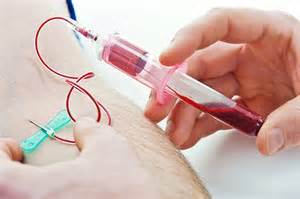|
| |
Metabolic Panel
Blood and urine testing will determine actual levels and how it
relates to various conditions, for which we use of homeopathy and nutrient therapies to
resolve.
Contact
us to become a client to order this test!

The metabolic panel we use is done
through Direct Health Care Access.
This is a USA laboratory that specializes in performing and coordinating all
laboratory testing for doctors, unique practitioners, and the public. This testing is available to our clients and
used if, when determined. This test is of great value in looking at actual
levels of function in Clients with ADHD,
Alzheimer's Disease,
Autism, copper toxicity,
infertility, menopausal
issues, methylation issues and
pyroluria and others.
This Metabolic Panel costs
about $296 and includes local blood
testing and at home urine testing as follows:
-
Whole blood histamine -
blood test used to measure methylation status.
The functional lab range for under methylation is above 70.
The functional lab range for is over methylation is below 40.
Please read more about methylation.
-
Kyrtopyrroles (Pyroluria)
- used to test by urine the amount of pyrroles excreted through
urinary quantitative testing.
This is done to see the level of pyrroles and
if there is too rapid excretion of zinc and
B6 through urine.
The functional range for pyrroles is below 9.
A level of 15 or higher is
pyroluria; 20 or higher is considered very high.
The level of kryptopyrroles is an overall marker of high oxidative stress.
Read more about pyroluria.
-
Plasma Zinc -
used to evaluate zinc
deficiency.
The functional range for zinc is 90
-135.
Read more about
zinc
and also the
zinc taste test.
-
Serum copper -
used to evaluate copper
toxicity.
This
blood test measures the
amount of copper in blood.
Serum copper is used not plasma copper.
The functional range for copper is 70 - 110.
Read more about copper toxicity.
-
Ceruloplasmin - used to
measure the amount of this protein that binds to copper in
the body.
Ceruloplasmin plays an
important role as a transporter in copper metabolism.
Most copper in the blood is bound to ceruloplasmin, some is bound to
albumin, MT or other proteins.
If ceruloplasmin is low, free copper can rise to toxic levels.
Unbound copper is toxic to the
body.
The relationship of ceruloplasmin to copper is a percentage.
Unbound copper is toxic to the body.
Above 25% is consider high unbound copper.
Read more about copper toxicity.
Hair Testing Instead of a Blood Panel For Assessing Low Zinc and High Copper
-
Hair Testing and Copper:
-
Hair analysis ALONE is a very poor way
to assess copper status.
-
Findings of high copper
levels in hair are compromised by the many external sources of
copper which cannot be completely removed by washing.
-
Low levels of
copper in hair and/or blood often are coincident with dangerous overloads
of copper in liver.
-
Hair copper values can
provide information of clinical significance, but by itself is not
clinically decisive.
-
Hair Testing and Zinc:
-
Low hair zinc correlates very well with low
plasma levels.
-
However, very elevated zinc in hair nearly always means a
zinc deficiency and loss of plasma zinc levels.
-
Most of the time this involves a
pyrrole
disorder which results in very high
zinc excretion in urine (and in hair).
-
In a healthy person without
metal-metabolism problem, only about 4 percent of excreted zinc
leaves through the kidneys.
Video on Lab Testing by Dr. Bill Walsh
(1:28 minutes)
| |
|